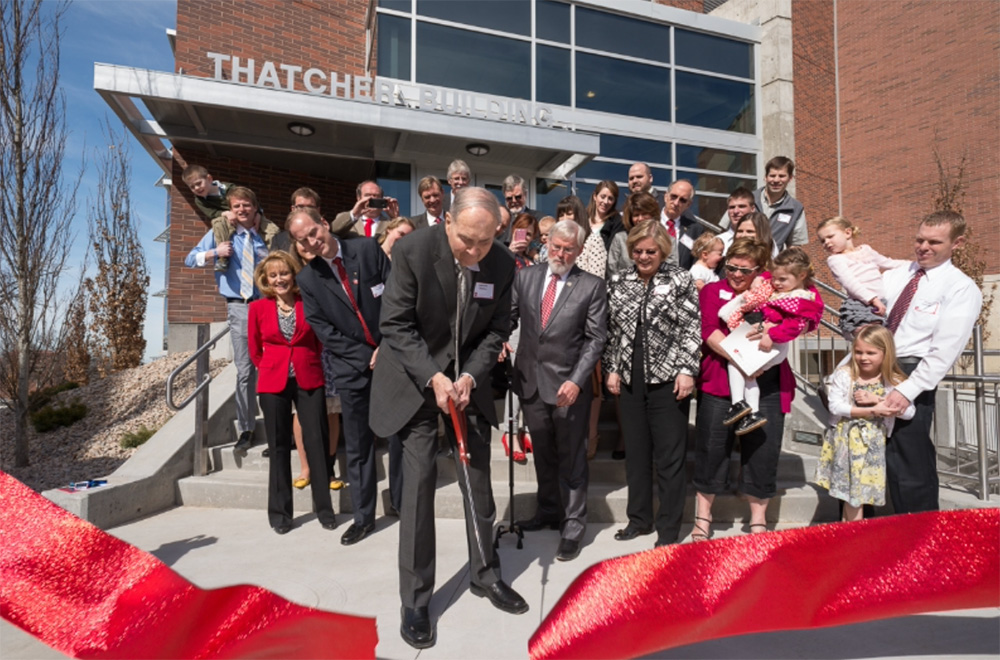
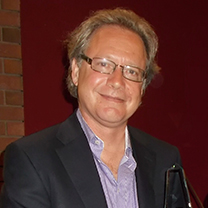
Professor David Clemmer received his Ph.D. at the University of Utah in 1992. He spent a year in Japan as a Japan Society for the Promotion of Science Fellow at the Himeji Institute of Technology and two years as a post-doctoral researcher at Northwestern University. He joined the Chemistry faculty at Indiana University in 1995. His research involves the development of methods for studying the structures of complex low-symmetry systems in the gas phase.
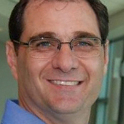
Jerry A. Murry obtained his Ph.D. in synthetic organic chemistry at the University of Utah with Professor Gary E. Keck in 1994 and completed an NIH postdoctoral fellowship with Professor David A. Evans at Harvard University. He started his industrial career at Pfizer, then worked as the Director of Process Development at Merck Research Laboratories. He joined Amgen in 2006, where he is now Vice President of Small Molecule Process and Product Development.
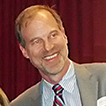
Thomas F. Thatcher received his BA in Chemistry from the University of Utah in 1985, along with an emphasis in Japanese. He was a missionary for the LDS Church in Fukuoka, Japan, from 1980 to 1982. In 1987, he obtained his MBA from Brigham Young University. He worked for 27 years at the Thatcher Company and was General Manager of Thatcher Pharmaceutical from 1999 – 2012. Tom is the founder and CEO of Intuitive Funding; a company focused on helping startups succeed.

Henry White was awarded the first Allen J. Bard Award in Electrochemistry for his pioneering innovations furthering scientific knowledge and understanding of nanometer-scale electrochemistry, micron-scale magnetohydrodynamic flow, ion transport across membranes, and electroanalytical applications of glass nanopore membranes. The award was presented at the 227th Electrochemical Society Meeting in May 2015.
Vahe Bandarian joined the faculty in July 2015. He received his Ph.D. in Biochemistry from the University of Wisconsin-Madison in 1998, working under the direction of George Reed. He was an NIH postdoctoral fellow in the lab of Rowena Matthews at the University of Michigan prior to joining the faculty at the University of Arizona in 2003.
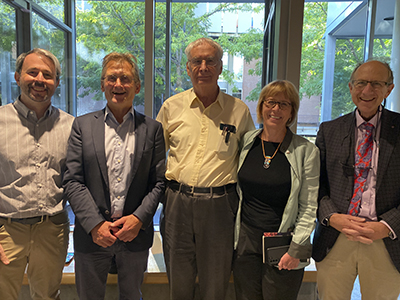 The Stang-Burrows-Sessler Lectureship was established by Jonathan Sessler (of UT Austin) to recognize his long-term friends and colleagues, Peter Stang and Cindy Burrows. The lecture provides a significant new educational and research opportunity for the Department’s students, engaging them with pioneering science from around the United States and the world. The Stang-Burrows-Sessler Lecture hosts leading voices in non-traditional areas of organic chemistry.
The Stang-Burrows-Sessler Lectureship was established by Jonathan Sessler (of UT Austin) to recognize his long-term friends and colleagues, Peter Stang and Cindy Burrows. The lecture provides a significant new educational and research opportunity for the Department’s students, engaging them with pioneering science from around the United States and the world. The Stang-Burrows-Sessler Lecture hosts leading voices in non-traditional areas of organic chemistry.
Jennifer Heemstra (now at Washington University) won a Cottrell Scholar Award.
Shelley Minteer won the Luigi Galvani Prize of the Bioelectrochemistry Society, an honor given once every two years for research in the field of bioelectrochemistry. She was the first professor from the U to receive the award.
Alumni News:
Jaqueline Kiplinger (Ph.D. ‘96) and David Moore (BS ‘74) were appointed to the rank of Fellow at Los Alamos National Laboratory. Fellows are chosen based on sustained, high-level achievements in programs of importance to the Laboratory. This fundamental discovery has led to widespread use and status as an authority in the field.
Dr. Kiplinger obtained her Ph.D. in Tom Richmond’s group in 1996. She is a recognized pioneer in uranium and thorium chemistry, and her research has significantly expanded the broad understanding of actinide and lanthanide chemical bonding and reactivity. Her synthetic innovations, often accomplished through chemistry previously thought impossible, have been adopted by researchers worldwide. Dr. Kiplinger has been named a Fellow of the Society of Chemistry (FRSC) and the American Association for the Advancement of Science (AAAS) for her internationally recognized work. She has received the Los Alamos Fellows Prize for Research. Dr. Kiplinger’s scientific achievements have been paralleled by her 15 years of dedicated service to the Laboratory. Her innovative “green” methods for preparing actinide materials have earned two R&D 100 Awards and two NNSA Best-in-Class Pollution Prevention.
Awards. Dr. Kiplinger’s sustained excellence in mentoring numerous students and postdocs has been recognized by Los Alamos’ Student Distinguished Mentor Award, STAR Award, and Postdoc Distinguished Mentor Award.
Dr. Moore received his bachelor’s degree in chemistry at the U in 1974 before pursuing his Ph.D. at Wisconsin. His laser shock experiments have opened the field of materials at extremes in pressure and temperature to a wide range of researchers. He has made it possible to study shocked materials in research labs with tabletop lasers, as well as to use de minimis quantities of materials to map out their equations of state under extreme conditions. Dr. Moore has contributed also to the lab through a continuous record of community service through mentoring and committee work, exemplified by Fellowship in the American Physical Society and International Union of Pure and Applied Chemistry, as well as a Los Alamos Fellows Prize for Leadership. He has contributed to national security through his work on explosives detection and by his work with a team initiating the lab’s homemade explosives course. Dr. Moore has performed high-impact work on national security in both the weapons program and the threat reduction directorate.
Jaqueline Kiplinger was also the 2015 recipient of the F. Albert Cotton Award in Synthetic Inorganic Chemistry from the American Chemical Society.
Peter Siddoway (BS ‘00) was named a new partner at Myers Bigel, the largest independent patent law firm in North Carolina. Mr. Siddoway is a member of the firm’s busy litigation practice. His bachelor’s degree and prior industry experience as a chemist enable him to address intellectual property disputes, and particularly patent litigation. He is admitted to practice in both Ohio and North Carolina, as well as before the United States Court of Appeals for the Federal Circuit and the U.S. Patent and Trademark Office. Mr. Siddoway’s experience in patent litigation involves a wide range of technologies, including digital cameras, automotive components, chemical compounds, and LEDs. He has litigated trademarks, restrictive employment agreement covenants, and trade secrets. He also has significant experience in the field of Inter Partes Review and other contested proceedings in the Patent Office.
Clifton Sanders, Ph.D., has accepted the Provost of Academic Affairs position at Salt Lake Community College (SLCC). Professor Sanders received his Ph.D. in organic chemistry in Professor Evan Allred’s lab in 1990. He worked for 3M and in private industry, coinventing innovations that led to several patents for medical devices. For the past 20 years, Prof. Sanders
has been a faculty member, division chair, dean, and interim vice president at SLCC. “His leadership in engaged learning, securing grants, workforce integration, cross-departmental collaboration, and social justice practices are and will continue to be an asset to the College,” said SLCC President Deneece G. Huftalin. Prof. Sanders’ vision for the post is a continued increase in certificate and degree completion rates while focusing on “deep learning, proficient workforce skills, transformative citizenship and a hunger for lifelong learning.” He said SLCC has several highly regarded programs and initiatives that have contributed to the institution awarding more than 30,000 certificates and degrees over the past decade. SLCC is the largest source of transfer students to Utah’s four-year institutions, a Top 10 college nationally for total associate degrees awarded, and the sole provider of applied technology courses in the Salt Lake region.
Research in Ryan Looper’s lab led to an antibiofilm antibiotic called CZ-99.
Peter Stang won the 2015 China’s Friendship Award, which the Chinese Academy of Sciences says is “the People’s Republic of China’s highest award for foreign experts who have made outstanding contributions to the country’s economic and social progress.”
Ryan Looper and Amy Barrios (BS ‘95, U of U Professor of Medicinal Chemistry) were both Teva Pharmaceutical Scholars in 2015, meaning that two out of the three Teva awards went to the U! The award is administered by ACS and funded by Teva Pharmaceuticals. It supports academic scientists at Ph.D.-granting institutions in the U.S. Awardees receive $100,000/year for three years to support research with potential or direct connections to medicinal chemistry.
Ryan Looper was also the U of U Presidential Scholar in 2015. The Presidential Scholar award supports the work of exceptionally promising mid-career faculty across campus, providing funding for three years for research, teaching, and outreach.
Luisa Whittaker-Brooks was one of four outstanding women chemists recognized with the inaugural Marion Milligan Mason Awards from the American Association for the Advancement of Science. The award provides early-career faculty with $50,000 for research.
Jay Kitt, then a Ph.D. student in the Harris group (now a Research Assistant Professor), won the Society for Applied Spectroscopy Barbara Stull Graduate Student Award, which recognizes a graduate student for outstanding research in spectroscopy and is presented in honor of longtime SAS colleague Barbara L. Stull. Kitt’s Ph.D. in Analytical Chemistry focused on using
confocal Raman microscopy to probe interfacial environments within nanoporous materials and optical-trapping confocal Raman microscopy to investigate phospholipid vesicle phase transitions. In 2012, he was awarded an NSF-IGERT research fellowship, and, as a teaching assistant in analytical chemistry, he was honored with the 2012 W.W. Epstein Outstanding Educator Award. The Coblentz Society recognized Kitt’s research in Raman spectroscopy with a Coblentz Student Award.
Alumni News:
Alan Eastman (BS ‘71, Ph.D. ‘75) is the co-founder and chief scientist of a startup geothermal energy company, GreenFire Energy, that uses supercritical CO2 instead of water to bring geothermal heat to the surface where it can be turned into electrical energy. This endeavor is still in the early stages but has working partnerships with national laboratories, as well as the interest of the Geothermal Technologies Program of the DOE. This fall, Eastman is also teaching a class on alternative energies through the U Department of Continuing Education’s Osher program.
The ACS named Ellen Fisher (Ph.D. ‘91) to its 2015 Class of Fellows. Fisher is a professor of chemistry at Colorado State University. She received her doctoral degree in ‘91, working with Prof. Peter Armentrout. Her research focuses on understanding the fundamental chemical processes that take place during plasma processing and chemical vapor deposition. She works to improve solar cell efficiency, develops composite nanomaterials, and explores environmental applications for plasma chemistry.
Barron Reyes (BS ‘05) graduated with a degree in Biochemistry and attended the University of Vermont School of Medicine. He graduated as chief resident of the emergency medicine residency program at the Maricopa Medical Center in Phoenix, AZ. Reyes now works as an attending emergency medicine physician in Wyoming.
Dr. David Wilson (BA ‘79, Ph.D. ‘84) received the prestigious “Hero of Chemistry” Award from the American Chemical Society. Wilson and his colleagues led the development of INSITE™ catalyst, a revolutionary technology for highly-tailored materials bridging the properties of plastic and rubber. These polymers are used in consumer markets, including automotive, building and construction, and consumer packaging. Wilson graduated magna cum laude with his bachelor’s in ‘79 and earned his Ph.D. with Prof. Richard Ernst in ‘84.
Dr. Andrew J. Leavitt (Ph.D. ‘94) was named the 11th chancellor of the University of Wisconsin Oshkosh. He received his Ph.D. in ‘94, working with Prof. Thomas Beebe, Jr. While a chemistry professor at the University of West Georgia, Leavitt was twice named Outstanding Faculty Member of the Year (‘99, ‘05) by the Student Government. Most recently he served as VP for University Advancement at the University of North Georgia and CEO of the University of North Georgia Foundation, Inc.
Bo Zhang (Ph.D. ‘06), who received his Ph.D. with Prof. Henry White, was recently promoted to the rank of Associate Professor with tenure in the chemistry department at the University of Washington, Seattle. He has a research group of 10 working in the areas of nanoscale electrochemistry, fluorescence-enabled electrochemical microscopy (FEEM) for imaging, and neuronal communication.
Dixon Woodbury (BA ‘80) graduated with a BA in Chemistry from the U in ‘80, then a Ph.D. in Physiology & Biophysics from UC-Irvine in ‘86. After a postdoc in the Boston area, Woodbury became an assistant professor at the Medical School at Wayne State University. In ‘01, he joined the Department of Physiology and Developmental Biology at BYU and was appointed chair in ‘13.
Amy Barrios (BS ‘95) is an Associate Professor of Medicinal Chemistry at the College of Pharmacy. She was recently named co-Director of the Women in Medicine and Sciences group at the U’s Health Sciences Center, which promotes faculty development, mentoring, and advocacy of women faculty in all stages of their careers. Barrios, along with Prof. Ryan Looper, is a 2015 Teva Pharmaceuticals Scholar.
Trent Ohman (BS ‘07) graduated in ‘07 with a BS in Biochemistry and began working in the mass spec lab at ARUP laboratories. For 8 years, he worked in various roles in mass spec and earned an ASCP medical technologist certification along the way. This August, Ohman started as the senior scientist at the Highland Springs Clinical Toxicology lab in Salt Lake City, where his team uses mass spec to confirm the presence or absence of drugs in urine.
Zlatko Bačić (Ph.D. ‘81), together with colleagues at NYU and NYU Shanghai, organized the inaugural 2015 Shanghai Symposium on Frontiers in Computational Chemistry, held in August in Shanghai, China. The symposium provided a platform for promoting international collaboration and exchange and presenting novel research directions and methodologies.
Speakers included leading theoretical chemists Todd Martinez, Weitao Yang, Martin Head-Gordon, Keiji Morokuma, David Tannor, Michael Collins, and Donghui Zhang. The next symposium is scheduled for the summer of 2017.
Robyn Seely (BS ‘04) graduated in ‘04 with a B.S. in Chemical Physics, then received a Doctorate of Pharmacy from Northeastern in ‘09. She is currently the Director of Pharmacy Drug Utilization for the UT Department of Health, where she writes policies for the Pharmacy benefit portion of Utah Medicaid and contributes to and interprets state and federal rules, statutes, and legislation.
Jared Frandsen (BS ‘08) received his BS in chemistry in 2008 after nearly ten years doing nuclear engineering on submarines for the US Navy. He received his Doctorate of Pharmacy from the U in 2015 and currently works as a Nuclear Pharmacist for the Department of Radiology at the U of U Hospital.
Jonathan Penfield (BS ‘09) graduated in ‘09 and went on to a master’s degree in Biochemistry at UBC Vancouver. He worked on the structure and kinetics of bacterial steroid metabolism. Penfield returned to the states this summer to work at Codexis in California as a Research Associate in enzyme engineering for its use in green chemistry.
